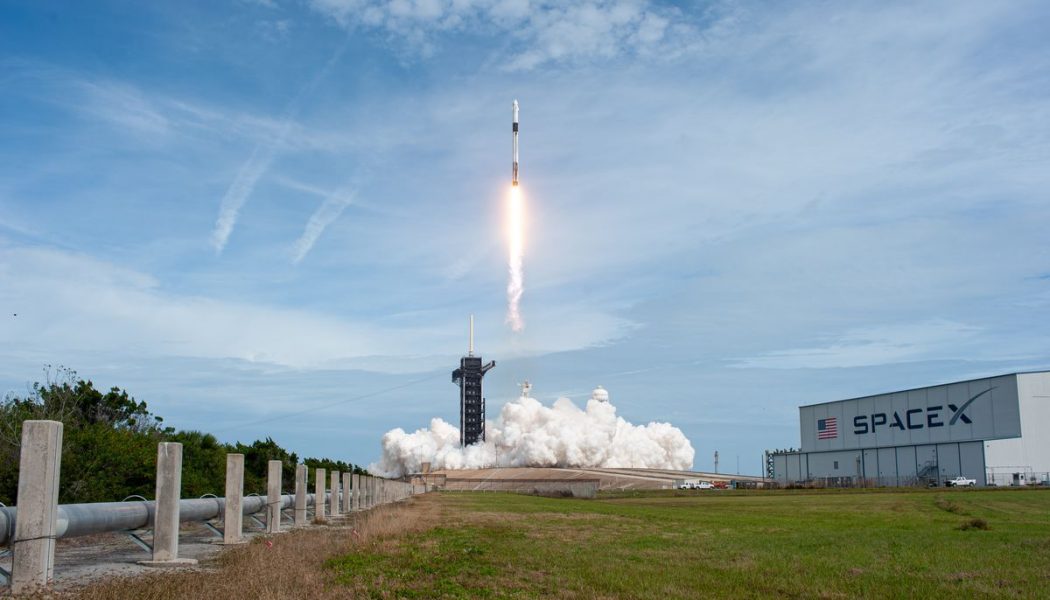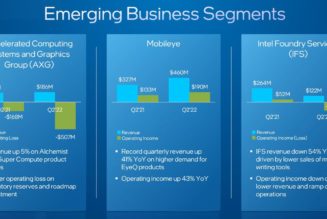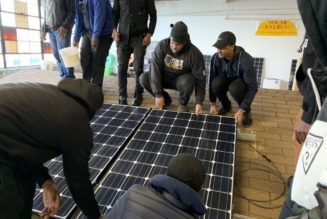On the afternoon of May 27th, two veteran NASA astronauts will make history when they strap themselves into a newly developed spacecraft on the east coast of Florida and blast off to the International Space Station. They will be the first people to launch on a truly private spacecraft — the Crew Dragon, built and operated by SpaceX. It’s a launch that could mark the beginning of a new era of spaceflight in the United States.
The mission is the culmination of nearly a decade of development and partnership between SpaceX and NASA. If successful, it will mark the first time that Americans have launched to orbit from the United States since the end of the Space Shuttle program in 2011. For the last nine years, all of NASA’s astronauts have launched to the International Space Station on Russian rockets from Kazakhstan.
While the return of human spaceflight to US soil is significant, this mission is also the final exam for SpaceX’s Crew Dragon as part of NASA’s Commercial Crew Program. The program has many goals, but its biggest is this: have private companies, not NASA, create the next generation of spacecraft that can take US astronauts to orbit. The hope was that these commercial vehicles would be cheaper than what NASA could make, saving taxpayer money. Once the spacecraft were complete, the companies that built them could then turn a profit by selling seats on their vehicles to paying customers.
In essence, NASA wanted to bring capitalism to human spaceflight. “It’s Capitalism 101,” Lori Garver, the deputy administrator of NASA under President Obama, tells The Verge. “The government is just not good at that stuff. We have been launching for 50 years, and the industry was doing all the work. Why not let them take it over and we buy the service?”
:no_upscale()/cdn.vox-cdn.com/uploads/chorus_asset/file/19989426/49419331818_75ce92ae13_o.jpg)
The numbers do seem to say that NASA saved money by making spacecraft this way, but the new economy of human spaceflight is still in its infancy. “It may be the beginning of greater things, or it may be that further steps are required to get to those commercial things,” Jeff Greason, an aerospace consultant and member of the Augustine Commission that reviewed NASA’s spaceflight programs, tells The Verge. “It’s progress no matter how you slice it. The only uncertainty is how much progress it is — and we won’t know that until we have some hindsight.”
So far, the Commercial Crew Program has a mixed record on achieving its goals, but most analysts agree that it has spearheaded a new way for both NASA and commercial enterprise to explore space — and that could fundamentally change what the space economy looks like in the coming decade.
A new way of doing business
As long as humans have been flying to space, the government has been in charge of getting them there. For the last half-century, NASA hired contractors to make its rockets while retaining complete control over every aspect of production and design. When the vehicles were complete, NASA owned and operated the hardware.
The result has typically been really expensive rockets. NASA’s budget ballooned in the 1960s in order to develop the Saturn V rocket that took astronauts to the Moon. The agency had hoped that its next vehicle, the Space Shuttle, would be more cost-effective, but that program wound up costing NASA roughly $1.6 billion per flight, according to one analysis.
“The thing holding space development back for its first 50 years was space transportation,” says Garver. “We just could not get the cost down.” Garver and others argue that NASA’s strong safety culture had locked the agency into its own particular way of doing things, which often made vehicles more complex than they needed to be. And a lack of competition didn’t incentivize anyone to keep the cost down, she says.
An opportunity to experiment came when the Bush administration called for the cancellation of the Space Shuttle program in 2004. NASA would still need a way to get supplies to the International Space Station once the Shuttle stopped running. The agency wanted something cheap — something that would free up funding for more ambitious projects, like exploring deep space. So officials established a new space business model called Commercial Orbital Transportation Services (COTS).
:no_upscale()/cdn.vox-cdn.com/uploads/chorus_asset/file/19989444/iss031e070799_large.jpg)
Through COTS, NASA would become an investor instead of the overseer. NASA would tell the companies what kinds of rockets or spacecraft it wanted and put up money for the project. The companies would be responsible for the design and construction of their vehicles.
To keep costs down, companies that participated would have to pay some of the development costs, incentivizing them to find ways to make things cheaply. And NASA wanted multiple companies involved to inspire competition. “As the costs come down, which they inevitably will with more competition, that’s going to allow NASA to do the harder farther things. That’s where they have expertise,” says Garver. In the end, NASA would be a regular customer just buying a service, like a passenger buying a ticket on an airplane.
“We did not want to be the only customer,” Alan Lindenmoyer, an aerospace consultant and former manager of the Commercial Crew and Cargo Program at NASA, tells The Verge. “We wanted this for the benefit of all people, all America. And we wanted very much to help bring down the cost of access to space. Because bringing down the cost was the key to opening up all the new markets.”
That reality played out. COTS selected SpaceX as one of its original providers, and with the help of NASA, the company developed its Falcon 9 rocket and cargo Dragon capsule. SpaceX went on to use its Falcon 9 to launch numerous commercial satellites.
Given the success of at least one of the providers, NASA decided to take things a step further. During the Obama administration, officials at NASA wondered if this business model could be applied to transporting astronauts as well as cargo. It was a radical concept, for NASA and lawmakers alike. “Safety I would say was a concern,” Carissa Christensen, founder and CEO of Bryce Space and Technology, a space analytics and engineering firm, tells The Verge. “And then always in the space industry there is a concern about whether companies will be around in the future.”
In 2014, NASA selected two companies — SpaceX and longtime NASA contractor Boeing — to make vehicles for the new Commercial Crew program.
Vision versus reality
Fast-forward to today, and the Commercial Crew Program is now a few steps from the finish line. But the initiative hit plenty of snags along the way. When NASA first awarded contracts to SpaceX and Boeing, the agency hoped their vehicles would fly with crews for the first time in 2017. It’s now three years after the deadline. SpaceX’s Falcon 9 rocket burst apart twice: once in flight and once during a test on the ground. The company’s Crew Dragon exploded during a ground test. Boeing suffered numerous software failures when it flew its capsule — the CST-100 Starliner — to space for the first time in December 2019.
Ultimately, SpaceX pulled ahead in the race, and now, NASA and others are looking back on whether the Commercial Crew Program accomplished what it was supposed to ahead of the company’s first flight.
:no_upscale()/cdn.vox-cdn.com/uploads/chorus_asset/file/19989449/49727102273_7023264423_o.jpg)
When you look at the numbers, the cost of developing the Crew Dragon has been drastically low compared to other NASA programs. NASA invested approximately upwards of $6.6. billion on the Commercial Crew Program over the last decade, according to an analysis from the Planetary Society. When compared to what it would have cost for NASA to develop similar vehicles, it’s a huge cost savings, somewhere on the order of tens of billions of dollars. “I knew this was a good deal for NASA, as human spaceflight projects go, but I didn’t realize just how crazy good this deal has been in terms of what NASA is getting out of this,” Casey Dreier, chief advocate and senior space policy adviser at the Planetary Society, tells The Verge.
Of course, it’s hard to compare these vehicles to what NASA would have done. The Crew Dragon and Starliner are relatively simple vehicles, quite different from the complex, deep-space vehicles that NASA has developed in the past. “Vehicles are doing different things in different ways,” Wayne Hale, the former program manager of the Space Shuttle program and current NASA advisor, tells The Verge. “It’s very hard to compare one against the other when they have such different missions and different capabilities. Both Boeing and SpaceX are taxi services; they’re basic kind of protection, there’s no airlock, no robotic arm. They’re effectively cargo-carrying vehicles, not unlike the Soyuz.”
In the process of creating these streamlined, serviceable spacecraft, the Commercial Crew Program also met its goal of creating competition. Both the cargo and crew programs helped SpaceX become a major player in a field that’s been dominated by the same contractor heavyweights for decades. And Garver says that involving one of those heavyweights, Boeing, was good for keeping costs competitive. “If SpaceX were the only one, I’m not saying they would try to do this, but the economics are they won’t have to keep a low price; there’s no competition,” Garver says.
But has the Commercial Crew Program truly produced commercial vehicles? That is a question that is still hard to answer. The point of this approach was for NASA to stay out of the design meetings and have little oversight. But experts argue that because the initiative revolved around launching humans to space, NASA was always going to be more involved. With astronaut lives on the line, it didn’t matter what kind of contracting method the agency used — NASA was going to have its say.
:no_upscale()/cdn.vox-cdn.com/uploads/chorus_asset/file/19989585/49860363401_eb49769dc0_o.jpg)
“It’s not a cookie cutter approach,” Christina Chaplain, a former director at the Government Accountability Office who audited the Commercial Crew Program, tells The Verge. “Every arrangement can be very different and tailored. And in this one, they did take a lot of measures to get more insight into the programs.” For instance, NASA instilled very strict safety standards on the Commercial Crew providers, mandating that the odds of these vehicles seriously injuring or killing their crew did not exceed one out of every 270 flights. (It’s a high bar, considering the Space Shuttle was considered to have a 1 in 90 chance of losing the vehicle toward the end of the program.) NASA also required the providers to meet an incredibly detailed list of safety and technical requirements that guided the design of the vehicles. Many of those requirements also changed or evolved as the program went on.
NASA’s safety advisers also argued that neither SpaceX nor Boeing could have gotten to this point independently, saying that the agency had to “substantially intervene” to help both of the companies throughout the process. “NASA continues to have deep expertise that should continue to be employed for the success of the nation’s most complex and challenging space system development and execution,” Patricia Sanders, the chair of the Aerospace Safety Advisory Panel, said during a meeting this May.
For some, that doesn’t equal a commercial transaction; it’s still the government looking over the shoulders of companies and pointing out changes in real time. “We haven’t made human spaceflight fully commercial yet,” says Greason. “In a commercial world, services have a price. You buy tickets, and if you don’t like the ticket that’s offered, then you don’t fly. I don’t think we’re there yet.”
The future of commercial human spaceflight
NASA is quick to say that doing business this way doesn’t work for all programs. And some analysts argue that the only reason NASA was able to take a chance on this type of approach with human spaceflight is because the agency had a Plan B to fall back on: Russia’s Soyuz rocket. “If you don’t have that kind of alternative, it makes this just riskier,” says Chaplain. “The government has to be willing for it not to work, if it doesn’t work.”
But given Commercial Crew’s apparent success, NASA is now hoping to use this lighter-touch model for much more ambitious endeavors — notably, sending people to the surface of the Moon. At the end of April, NASA awarded preliminary contracts to three primary companies — SpaceX included — to develop a human lunar lander.
Experts say this may help NASA save money — like it did with Commercial Crew — but it’s unclear what kind of market exists for humans to go to the Moon. “There is no clear commercial market for lunar activity,” says Christensen. “There’s not one today, and there’s not a clear pathway to one. But there is a non-US government market, right? There are certainly other nations that may want to conduct lunar activities but can’t come close to fielding their own full program.”
As NASA looks ahead to its next project, it still remains to be seen if there is even a market for the Commercial Crew vehicles beyond NASA. The reason this model worked so well for the COTS program is because there was already an established market and need for rockets: to launch satellites. “It was reverse from the Commercial Cargo Program, where there was already a known market for launching stuff right into [low Earth orbit],” says Dreier. “And this was completely backwards. It was: ‘What if we just build the capability and maybe the market will show up?’”
:no_upscale()/cdn.vox-cdn.com/uploads/chorus_asset/file/19989938/47266513772_91a0ef837e_o.jpg)
There aren’t that many businesses currently operating in low Earth orbit, leaving SpaceX and Boeing with limited destinations for their taxi service. “It’s kind of a catch-22, chicken and the egg problem right now,” says Hale. “One of the reasons there is no business in low Earth orbit is because the transportation costs are high. And then by helping companies build a cheaper transportation system, the cost is lowered, and business will pick up the slack. So that’s the theory anyway.”
SpaceX has announced that there is some interest in private citizens riding on the Crew Dragon. The company has sold four seats to passengers who will take a trip around the Earth on the vehicle in 2021. They also plan to eventually send customers to a private space station developed by a commercial company called Axiom. And a lot of evidence points to SpaceX one day launching Tom Cruise to the International Space Station to film some unknown feature film.
It appears as if things are moving in the right direction, but a few announcements doesn’t mean the mission has been accomplished. As with any burgeoning market, time is ultimately needed to see if a pattern forms and if these kinds of trips are sustainable.
“It’s encouraging that there’s been these announcements of some initial commercial customers,” says Greason. “And of course, if that turns out to be not just three [trips], but three every year or three every six months, then I’ll be thrilled. Then we got everything we wanted. I’m not sure that that’s going to turn out to be that way, but I certainly hope it does.”










